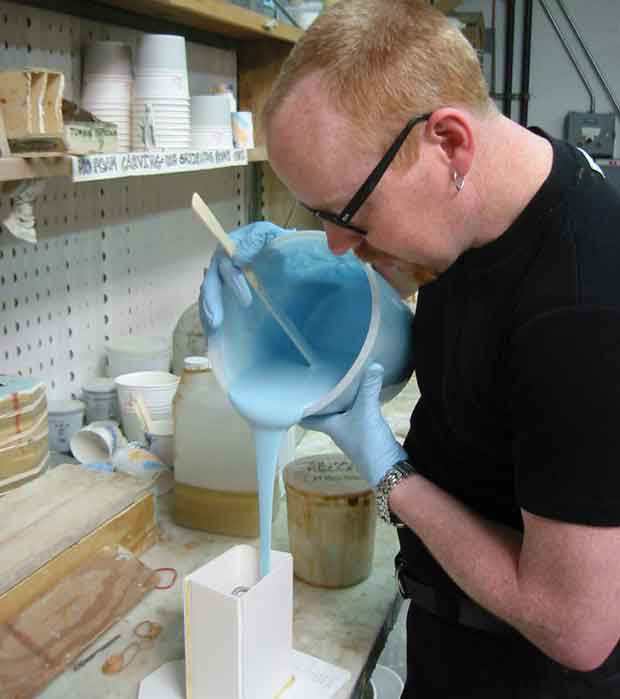
In principle, moldmaking is a simple process, but with every object you want to replicate comes a new series of pitfalls, innovations, and solutions.
This article explains how to make a two-part, underpoured block mold, which is a versatile and beginner-friendly type that’s great for small, detailed objects such as jewelry, game pieces, masks, picture frames, and figurines. I learned this technique by apprenticing under some of the great moldmaking masters in the special effects industry, and this article reveals their unpublished tricks. I hope they don’t get mad.
We’ll make our mold out of silicone rubber, an excellent casting material, but it costs about $100 per gallon. This process uses as little of it as necessary, and it’s important to follow all of these instructions, because a mistake can be costly. Then we’ll cast our duplicates in opaque urethane resin (clear resin requires a more difficult process).
Why a Two-Part, Underpoured Mold?
Two-part molds can handle more shapes than one-piece molds, which work only for simple, completely convex objects. And underpoured molds minimize problems with bubbles in the resin.

Underpouring means that you pour the resin into a main intake vent (or sprue) that curves around to fill the mold up from below, rather than simply pouring into the top (Figure A). Meanwhile, smaller vents on top allow the displaced air to escape. As you pour, resin splashing down forms bubbles which can stay in the main cavity and ruin the surface of the casting. These bubbles also tend to collect in fine-detail areas, where they are the most difficult to deal with.
The advantage of under-pouring is that it generates fewer bubbles, and lets them rise up into the vents where they won’t cause trouble. Top-pour molds are sometimes acceptable, but pouring from underneath is generally worth the extra silicone required.
Taking Care
- Many mold materials are time-sensitive, so after each step, you lay out all the things you’ll need next.
- Molds are too often destroyed by impatience; not spending an extra 2 minutes mixing the silicone (for example) can throw away several days’ work.
- Some materials, such as the thickening fillers, are also toxic, so wear eye protection, gloves, and a smock or apron, and work in a well-ventilated area.
- Finally, no matter how careful you are, be prepared to mess up until you have more experience.


